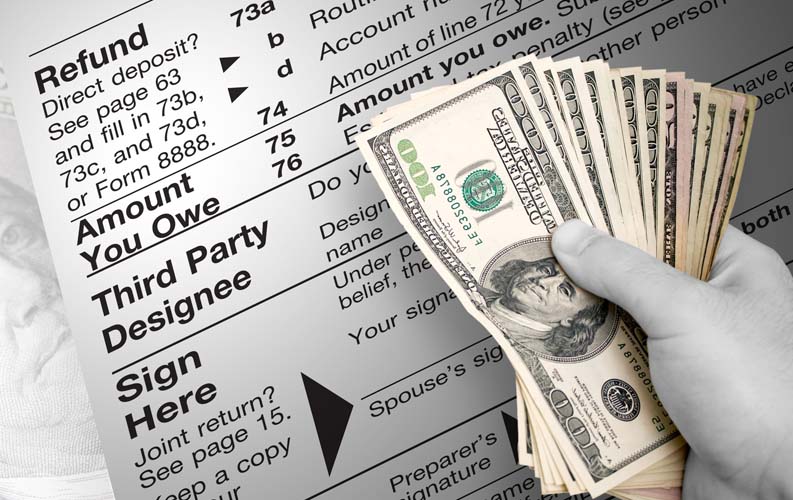Over the past several years, the appraisal review boards have been raising assessed values across the state of Texas, with the major markets being hit hardest. I want to help you save some money, and be ready to protest as the window of opportunity is rapidly approaching.
My clients, friends, and associates know that, over the years, I have devoted time not only to protesting my taxes, but also teaching others how to protest their taxes. Since the protest season is right around the corner (May timeframe), let’s dive right in with an example and what to do.
Say you purchased a property that has a current county tax-assessed value of $200,000, with a tax rate of 2.67%. This would mean your annual tax amount would be $5,340. If you purchased this property for $100,000 because it needed a significant rehab, shouldn’t the tax-assessed value reflect the property in its purchased condition? Of course it should, but in most cases it will not. Why? Most property owners do not protest their property taxes, and if you bought this property off-market, the appraisal district isn’t going to know what you paid for the property, let alone the condition.
If you protested the property taxes in this example, and reduced the tax-assessed value to the purchase price of $100,000, you would now have a tax amount of only $2,670, or one half the current tax amount.
Let’s say the market rent for this house is $2,000/month. The principal and interest payments are $852/month (based on a loan amount of $150,000, interest rate of 5.5%, on a 30 year note), and insurance of $100/month ($1,200 per year). Your positive cash flow before protesting would be $603. After protesting, your cash flow increases to $825.50. This additional $222.50/month is a 37% increase!
Conversely, if you are flipping this house, and it takes you six months to get it sold, your savings on the tax credit you give the borrower would be $1,335. While that doesn’t seem like a lot of money, every dollar counts when you’re flipping a house. For a couple of hours work, you can decide if it’s worth the effort to protest.
Steps to Protesting
The first step in protesting your property taxes is to find the appraisal district website for the county where your property is located. For example, if your property is in Dallas County, go to www.dallascad.org. Once you are there, look for the menu, or search the site for tax protest guidelines. Many districts allow protest filing to be submitted online. However, each appraisal district has their own protest time window for when you can protest, along with their own procedures, and how the process works. All of it is quite simple and doesn’t consume a lot of time. Just follow the steps and you’ll be on your way to saving money.
Whether you protest online, by mail, or in person, be prepared to have the following four items ready to make your case:
1) Settlement Statement from closing. This shows the appraiser what you paid for the property. A copy is fine as they do not need your original.
2) Photos of the property that the appraiser can keep for their file. You will want to use pre-rehab photos. The uglier, the better. This illustrates why you were able to purchase at such a low price (“Mr. Appraiser, this property was a disaster when I bought it. Just look at these photos….”)
3) Estimates of work to be performed. This shows the amount of work needed to get the property in livable condition. If you have this documentation, it helps prove your case.
4) Sold Comparables (comps) in the subject’s area. You need these for a current understanding of the market in your subject’s area. The tax appraiser will certainly be looking at them online, when making a decision on your value. However, they will not be weighted as heavily as the other items if your property needed significant work. If you are not familiar with how to get effective comps, you need to get with a realtor or appraiser to help you.
After you file your protest, you will be sent a notice with a date and time for your ARB hearing. Prior to this hearing date, you will want to make an appointment for an informal review with a staff appraiser. This can be arranged by phone or going to the appraisal district in person.
At your protest appointment, your objective should be to get the tax assessed value lowered to the purchase price of the property. If the property needed significant work, the purchase price is justifiable for the new assessed value. My advice is don’t talk too much. Less is more in these situations, and the appraiser already knows why you are there. Merely stating that you want the value lowered to a specific amount due to condition, should suffice. Submitting your settlement statement, ugly photos and estimates of work to be performed, will illustrate that you are prepared and will provide appropriate data to make your case. The appraiser, in most cases, will lower the value, maybe not to the purchase price, but to some lower assessed value.
My advice is take what you can get. However, if you are not happy and feel that you were not treated fairly, you can refuse to sign the adjusted value form, and take your case to the Appraisal Review Board (ARB) at the scheduled time you received on your protest acknowledgement. This is a separate in-person hearing with ARB members, and the district website will explain the process for doing this. I’ve had success at an ARB hearing. They can be worth your time, if the savings are significant.
If you hold the property as a rental, you need to repeat these steps each year. You won’t be able to get the value down to the purchase price again though, so you will need to use your realtor or appraiser to figure out what the new comps are that year and be prepared to state the new value you are looking for instead of providing a settlement statement.
As real estate investors, we want the maximum return we can get from each property. I would highly encourage you to protest every property you purchase, including properties you are going to flip where the numbers and timeframes make sense. Even protesting just one property can make a huge difference in your returns. If you have multiple properties the savings can literally be thousands of dollars.


 Mike Hanna is a real estate investor, mentor, author, and public speaker. He has been an active real estate investor since 2002 in both single family and multi-family properties, and has been in the hard money business since 2005.
Mike Hanna is a real estate investor, mentor, author, and public speaker. He has been an active real estate investor since 2002 in both single family and multi-family properties, and has been in the hard money business since 2005.